
The Great Oriental Tour
Day One
Arrival to Shiraz by Qatar Air. Transfer to Grand Shiraz Hotel 5*.
You will have enough time to take a rest before the tour starts.

Today sightseeing of Shiraz is mainly devoted to Zandieh Complex, which includes the citadel…

… the Great Vakil Mosque…

… Vakil Bath, Sara-e- Moshir…

… and Vakil Bazar. It take us around 2 h to visit all this places.

UIn the late afternoon you will visit Ali Ibn Hamzeh Mosque and Quran Gate.

The space is fully finished with Venetian mirrors, which are “moved apart”.
Lunch and dinner – in local restaurants with Iranian traditional food.
Night in Shiraz

Day Two
Breakfast in Hotel.
Today’s city tour of Shiraz will start with a visit to a Nasr’ol Molk Mosque with an intricate tile work (a deep shade of blue) and eye-catching carved pillars.

Next we will visit Eram Garden and than…

We will also visit the mausoleum of Hafez, one of the great Iranian poets of the Middle Ages (XIV century), a philosopher and lyricist, a Sufi sheikh. People still come here to ask for mutual love. There is a belief in Iran: take a book of Hafez in your hands, make a wish or ask a question, close your eyes, open a book on any page, put an index finger on it. Your chosen quatrain will contain the answer. You will have the opportunity to try …

And this is the mausoleum of Saadi, the great Persian Sufi and wanderer (XIII century), the author of the famous poems “Bustan” and “Golestan”, in which Sufi philosophy and ethics are set out in prose along with the verses. It is believed that Hafez was the successor of these traditions.

We will complete our tour at the Gate of the Quran. In ancient times, Shiraz had six gates. One of them was the Gate of the Quran, built in the middle of the X century. The place was not chosen by chance – from the gorge, where they were erected, a panoramic view of the medieval part of Shiraz opens. It was assumed that everyone who sees this magnificence should praise Allah for allowing people to create such beauty. In the Middle Ages, two ancient hand-written Qurans were kept in the gate. According to legend, travelers passing through the gate received the blessing of the Holy Book, and this helped them further on their way.
Lunch and dinner – in local restaurants with Iranian traditional food.
Night in Shiraz

Day Three
Breakfast in Hotel. Check out.
Today we are going to Isfahan (Distance – 500 km), visiting on the way the UNESCO World Heritage site Persepolis – the capital of the vast Achaemenid Persian Empire for centuries. It will take aprox. 2 h.

We continue our trip by seeing Naqsh-e Rustam, a royal necropolis standing as an enduring memory of glorious ancient Persia in which there are four tombs belonging to Achaemenid kings (45 min).

Within an hour’s drive from Persepolis is another ancient capital, Pasargadae, home to the Tomb of Cyrus the Great (30 min).
Lunch in a local restaurant with Iranian traditional food.
We’ll arrive to Isfahan during evening. We’ll check in Abbasi/Kowsar Hotel.

we’ll start from visiting one of the largest squares in the world, Naqsge-e Jahan and its’ UNESCO World Heritage sites located around the perimeter starting from of the Imam Mosque…
Back to the hotel.
Overnight in Isfahan.

Day Four
After breakfast at the hotel we will go to Shah Square.
The tour will begin with a visit to the Shah Mosque (first half of the 17th century). This is the largest building in the city, with an area of 20,000 m2. The surface of the wall, a set of domes and minarets are covered of blue ceramic tiles with elaborate ornament. The main hall has unique acoustics – seventeen-fold echo! The mosque is one of the masterpieces of Islamic architecture.

The palace of Ali Gapu located here (the end of the XVI century) is the residence of Shah Abbas. It has 6 floors. The unique elements of the building are the pools with fountains located on the upper floors, where water was supplied from the nearby mountains due to the height difference, and …

… a music hall, whose walls and ceiling are decorated with limestone niches of special shapes that create unique acoustics. The walls and ceiling are painted with elaborate patterns.

…the Sheikh Lotfollah Mosque (built without minarets)…

…which change the color depending on the morning or evening sunlight!

Here on the square there are many shops of Isfahan artists and craftsmen. You can choose a souvenir for every taste: an Iranian miniature, which the masters draw before your eyes or …

… antique and jewelry, coinage, and maybe ceramic tiles with traditional Persian ornament.

After lunch in a local restaurant we’ll continue 0our tour of Isfahan by visiting Chehel Sotun Palace…

…which owns the best samples of medieval Islamic Persian paintings (50 min).
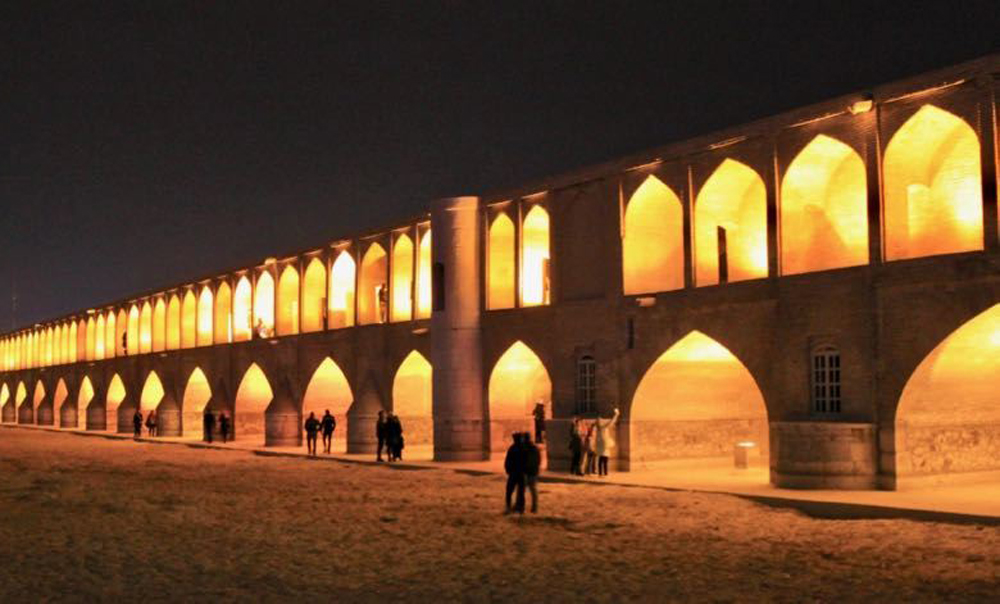
In the late afternoon, we will visit the C-o-Se Paul Bridge (Thirty Three Bridges). It is named so because it consists of 33 spans. The bridge was built by Alaverdi Khan, an associate of Shah Abbas and the commander-in-chief of his armed forces in the early 17th century. The bridge is 290 meters long and 13.5 meters wide, which allowed cavalry and artillery to move along it. C-o-Se Paul is a uniquely beautiful structure. Currently, the bed of the river Zayandeh Rud, through which it was transferred, has completely dried up. The bridge lost its original meaning, but continued life as a monument of medieval architecture.

Day Five
We say goodbye to Isfahan and travel further north to Tehran. But before leaving we will see a couple more sights. This is an Armenian Gregorian temple (mid-XVII century), erected by order of Shah Abbas to attract Armenian merchants to Persia, famous masters of commerce. Shah lured them from the Ottoman Empire, where they were subjected to persecution. The cathedral combines Christian and Muslim architectural styles, concise outside and richly decorated inside.
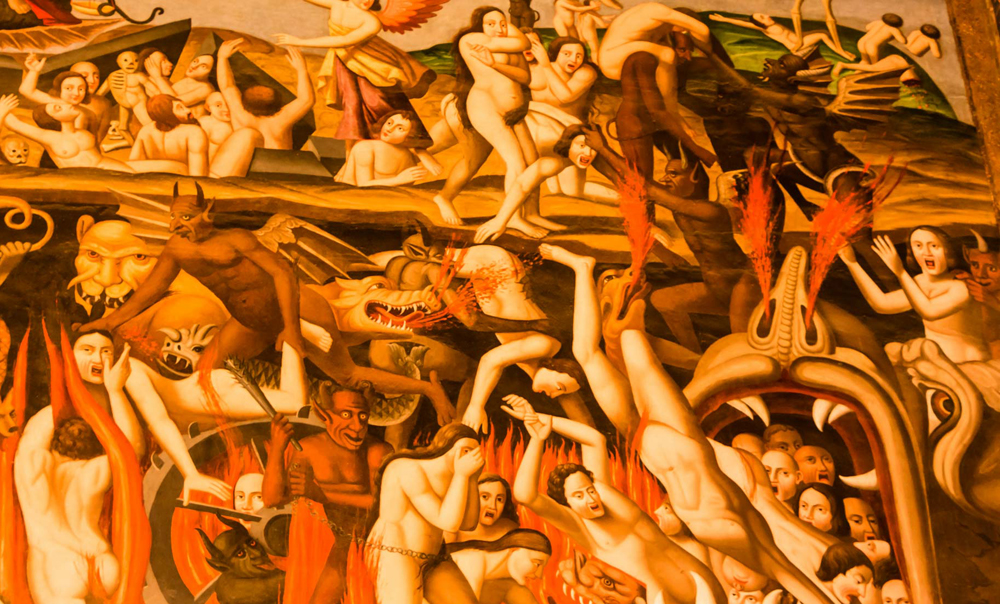
The walls of the temple are richly painted with frescoes. They depict events from the life of Jesus, as well as the torture suffered by the Armenian martyrs from the Ottomans.
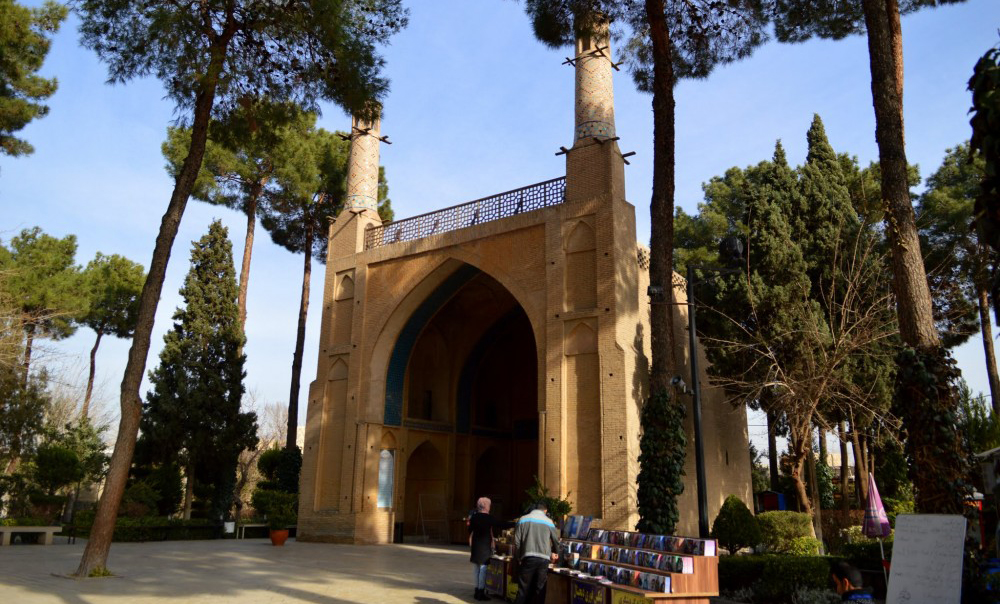
Then we move to the Shaking Minarets. This is one of the most famous attractions of Isfahan. Minarets are the part of a mausoleum built in 14 century on the site of the tomb of the famous Iranian Sufi.
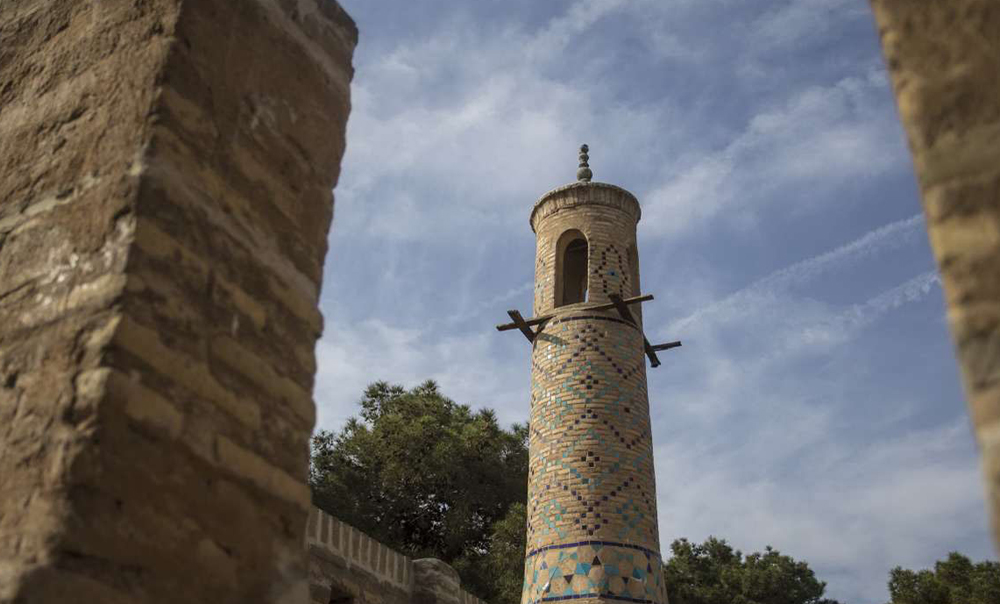
If, once at this place, you begin to move your body from right to left or vice versa, then the minaret begins to repeat your movements. But the most surprising thing is that the second minaret is swinging in time with it. So they delight people swinging from the XIV century to the present day.

Kashan is located on the road from Isfahan to Tehran. This is an oasis in the middle of a wide desert space, dried by the sun and winds. Archaeological finds from the Elama period indicate that in the long past this area was one of the centers of civilization.
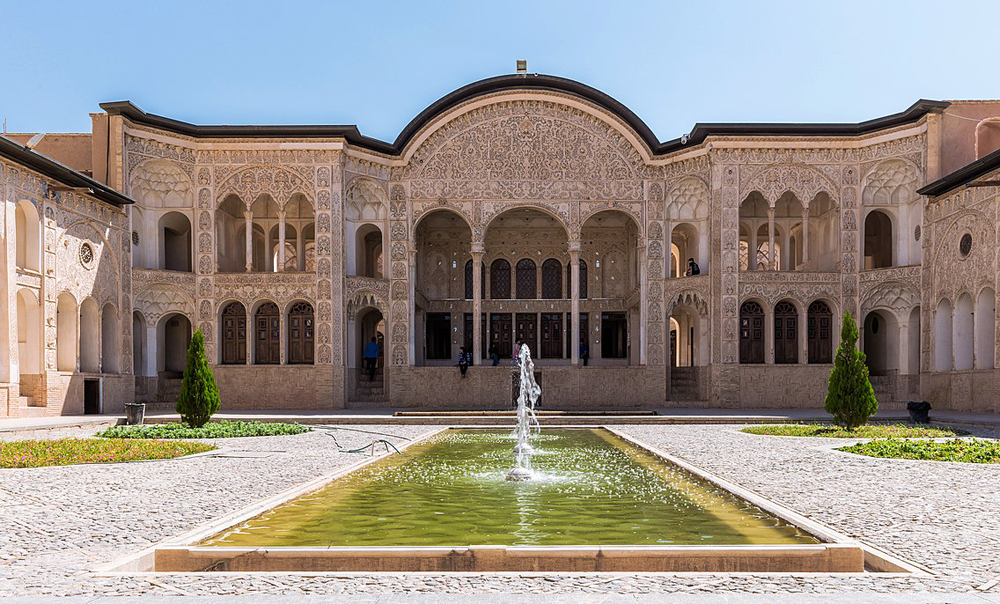
Once you are in Kashan you are visiting one of the best Iranian houses in size and architecture – the Tabatabai House (40 min).

You also take a look at the historical Mosque of Agha Bozorg (30 min) before living the city to Teheran.
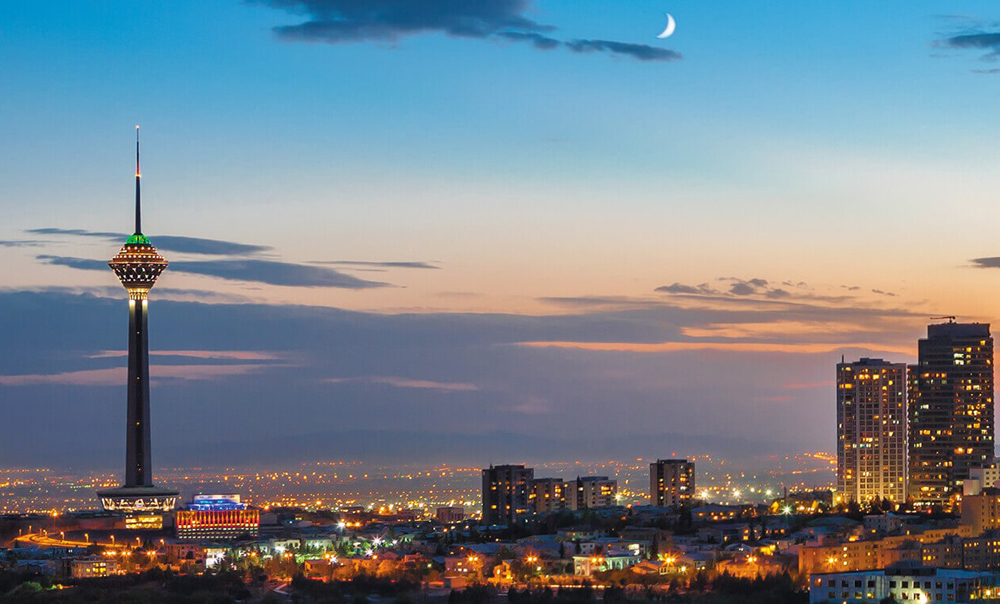
Arrival to Tehran in the evening. Check in the Espinas Palace hotel 5*. Leisure time.
Lunch and dinner – in local restaurants.
Night in Tehran.
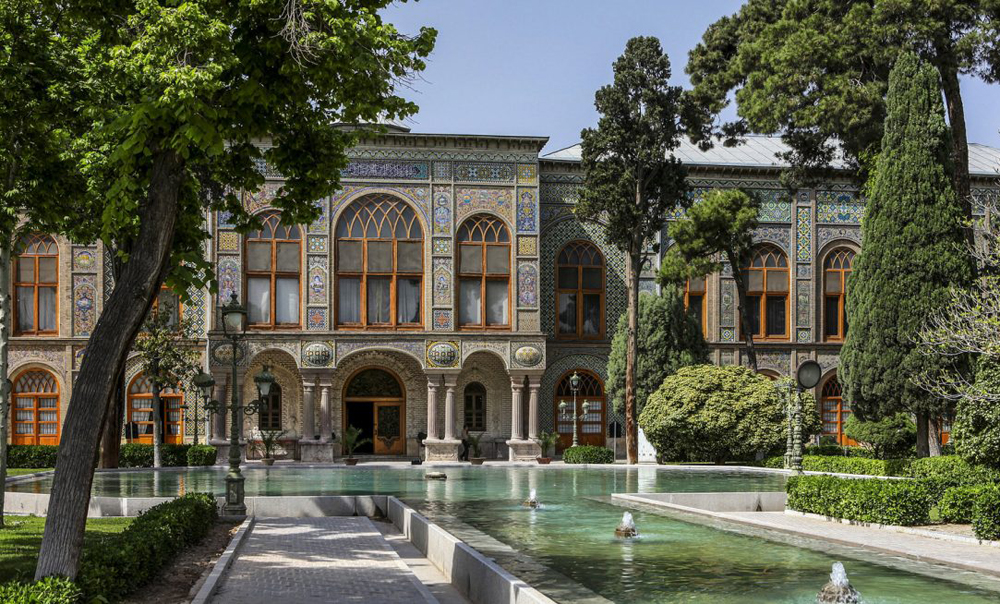
Day Six
Breakfast at the hotel.
Today’s city tour begins by visiting Golestan Palace…
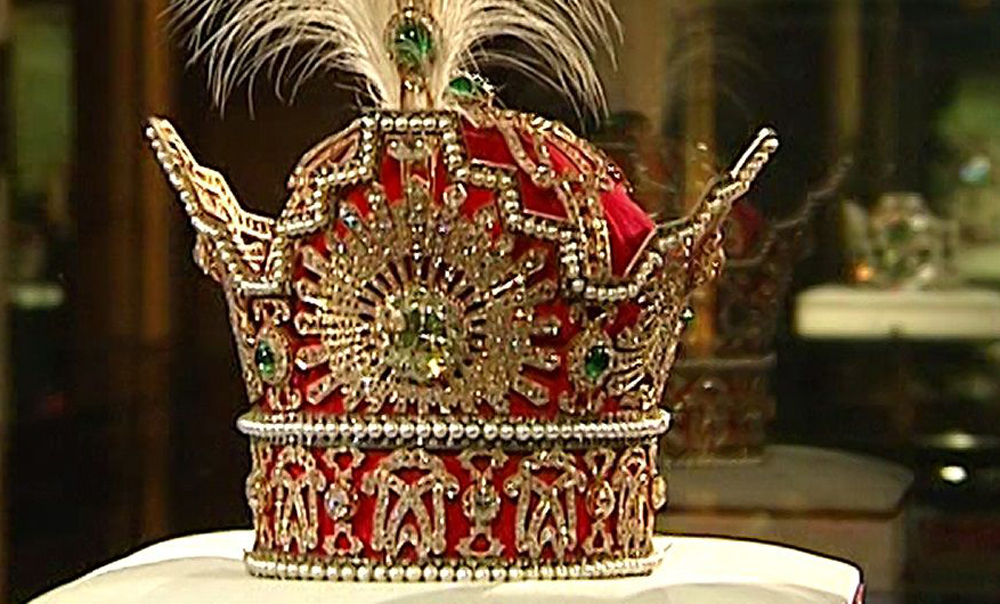
… and the National Jewelry Museum (1 h) housing one of the word’s most valuable jewelry collection.
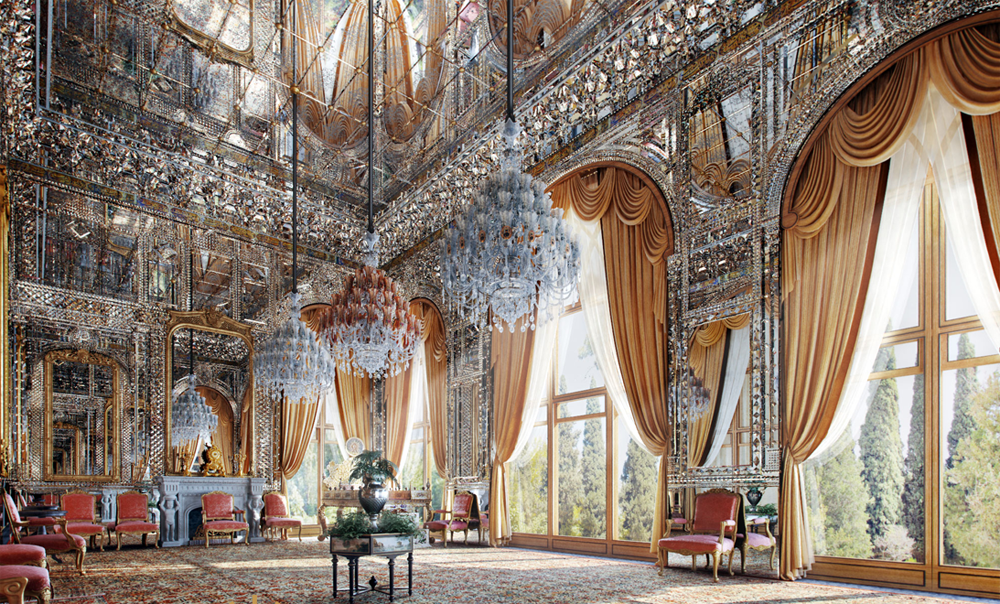
…representing architectural and aesthetic accomplishments of the Qajar time (including the introduction of Europian themes and styles into Persian arts.
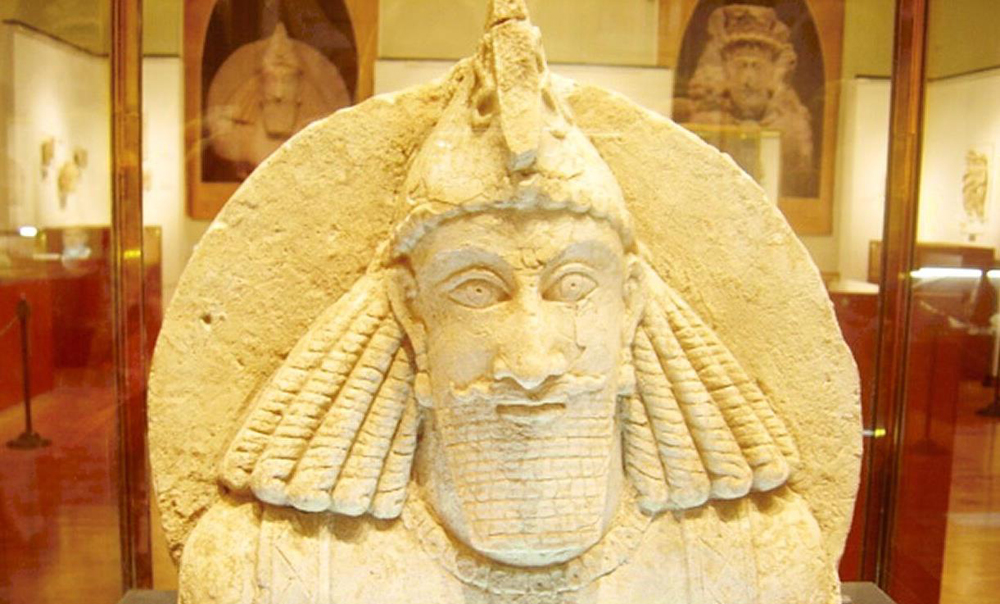
Than we’ll visit the National Museum of Iran (1 h) showing the rich history of the country’s ancient and medieval periods.

Next, if you wish, we can go to the Carpet Museum. Iran deservedly takes the first place in the world in this unusually complex and skillful craft …

… or we can to the souvenir shopping to the central streets of the city. But it is necessary to take into account that today it is better for us to return to the hotel early, as we are expected by an early rise and flight from Tehran to Baku.
We leave the hotel around 00:00АМ and fly to Azerbaijan on the Azal flight at 02.45.

Day Seven
Transfer to Tehran International Airport.
02.45: Flight to Baku by Azal Airline
Arrival to Baku International Airport, transfer to Baku, check in a hotel.
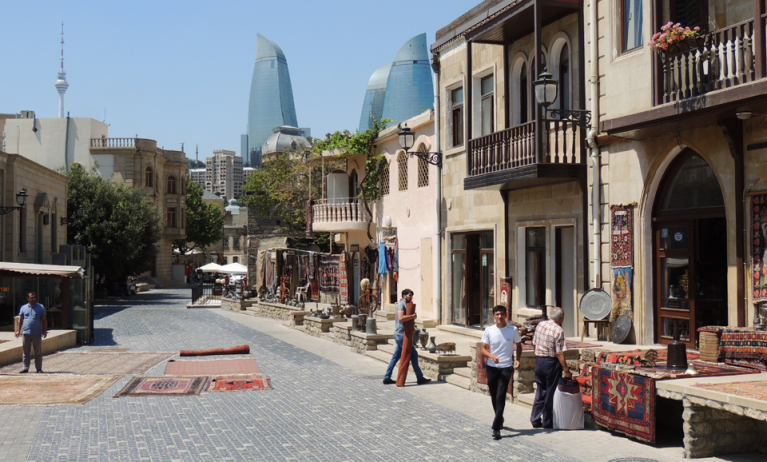
Today’s excursion program covers the entire central part of the city with display of the most interesting historical and architectural sites. Excursions start by visit to the Old Town – «Icheri Sheher» that is the heart of Baku. Here, on the hill, near the sea ancient city was born.
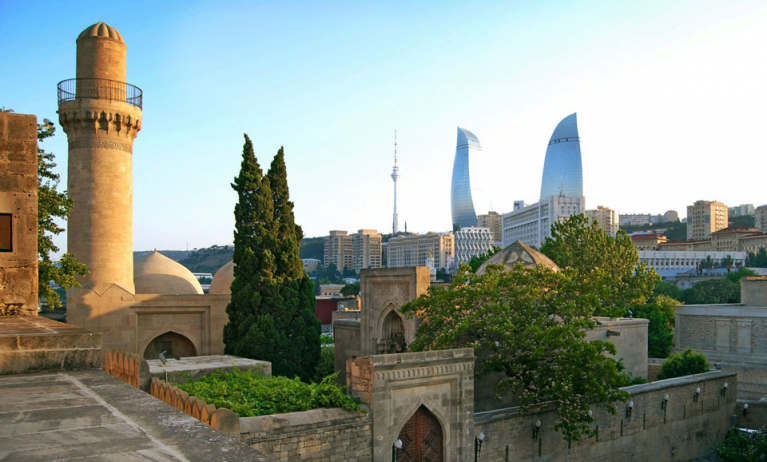
Several dozens of Historically architectural monuments located in the territory of Old Town including Palace of Shirvanshahs, the Maiden Tower, several caravan-sarays, mosques, baths, etc.
Dinner at a local restaurant.
Overnight in Baku.
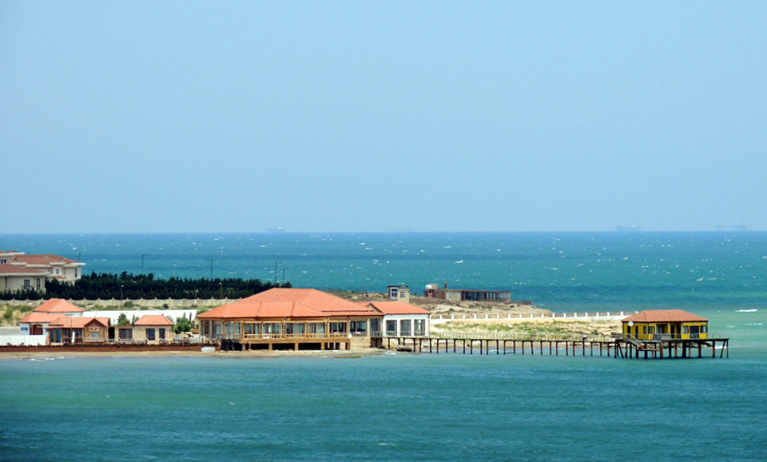
Day Eight
Today, we will take a trip around the Absheron Peninsula. You cannot come to Azerbaijan and not see the Caspian! We will go out onto the shore to take a look at this boundless azure expanse.
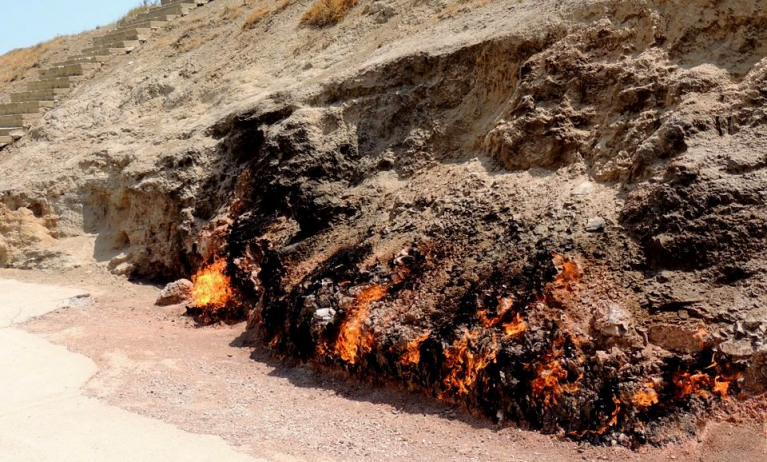
Absheron has another claim to fame—its burning mountain. There is nothing mystical here. Natural gas has been seeping steadily from the subsurface at this spot for millennia and is manifested in tongues of fire.

Excursion to Absheron peninsula. The distance is 30 km, the road category is 1. The excursion time is 2 hours 30 minutes. The oldest Zoroastrian church in the Caucasus « Ateshga» (house of fire) is located here.
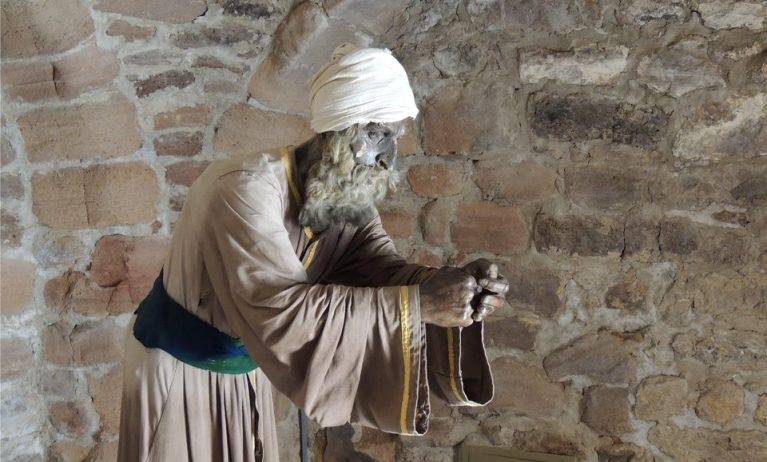
Zoroastrianism was the predominant religion in this region for millennia. The ancient Persians were fire worshippers. The present-day territory of Azerbaijan was part of their empire.
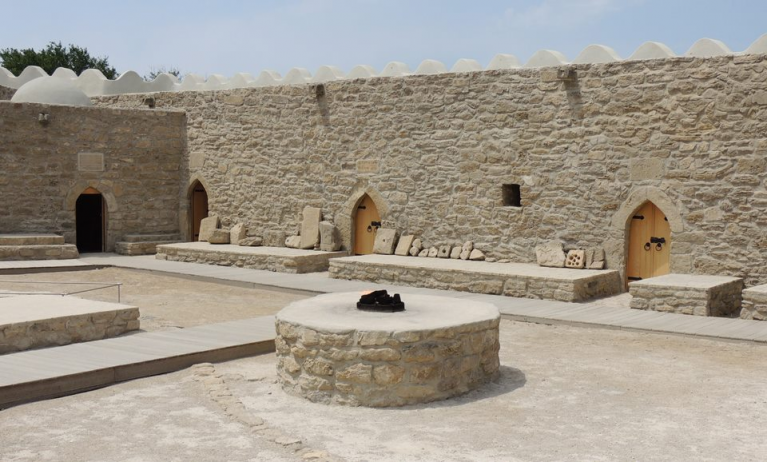
The museum reproduces the atmosphere of millennia ago. The fire and stones here are natural.
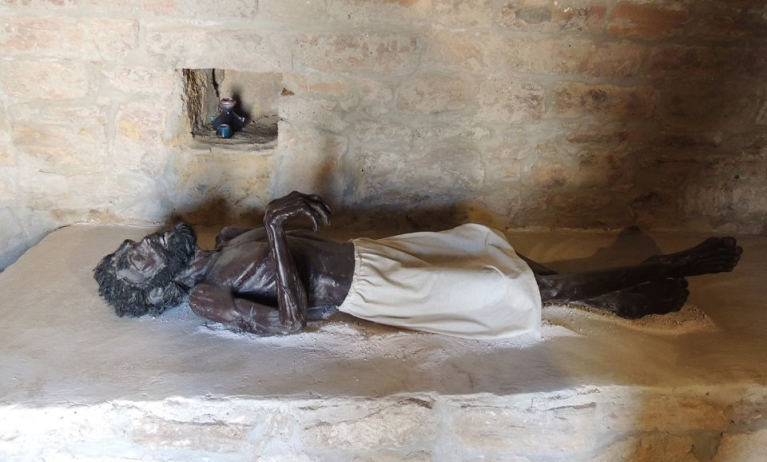
… while the figures are made from paper mache. Here is an Indian. He is resting. He lies on a bed of lime and has sprinkled himself with it to stop the insects from bothering him.

Driving back to Baku.
Lunch at local restaurant. Leisure time.
Dinner at a local restaurant.
Night in Baku.
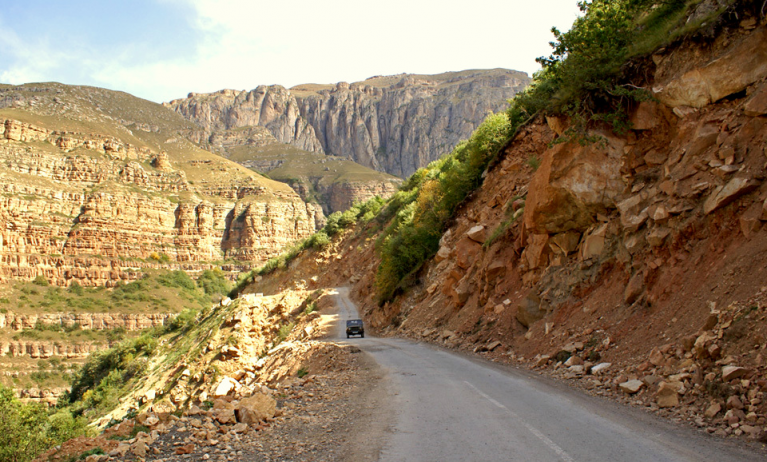
Day Nine
Today, we set off for the west of Azerbaijan, in the direction of Georgia. And on the way we will visit different interesting sites. Our journey takes us along the southern slopes of the Greater Caucasian Mountain Range. The mountains in these parts are partially bare, partially covered in thick forests. Rivers run through the picturesque gorges.
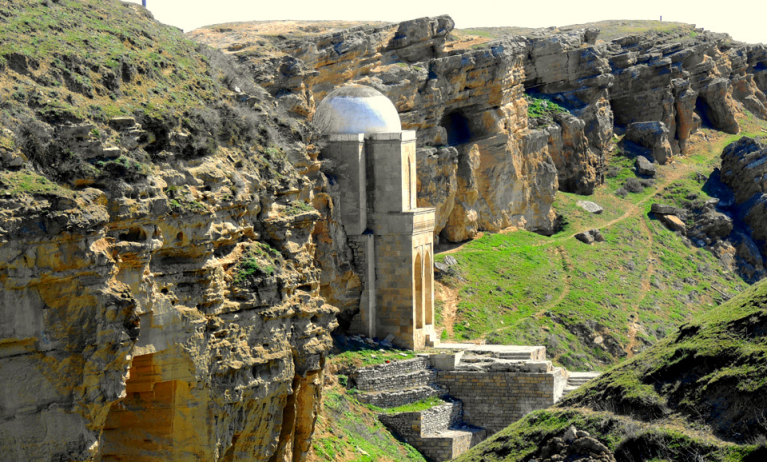
Along the way, we will stop at the mausoleum of Sufi philosopher and hermit Diri Baba. It was built at the beginning of the 15th century in a deep gorge right up against a hanging cliff. This place is known for many its many mystical stories. We won’t tell you ahead of time to keep the suspense…

We will visit the town of Shamakhi. This town was the ancient capital of the Shirvan khanate. It is also known for its handmade silk, which was highly valued in the European markets back in the olden days.
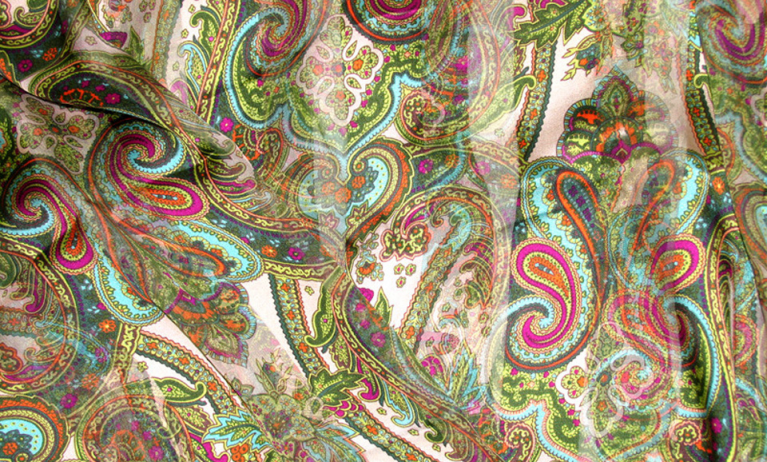
We will visit workshops where silk scarves are made. They use only natural dyes and the patterns are embroidered by hand.

The next stop on our journey is Lahidzh. It is surrounded on all sides by high mountains.
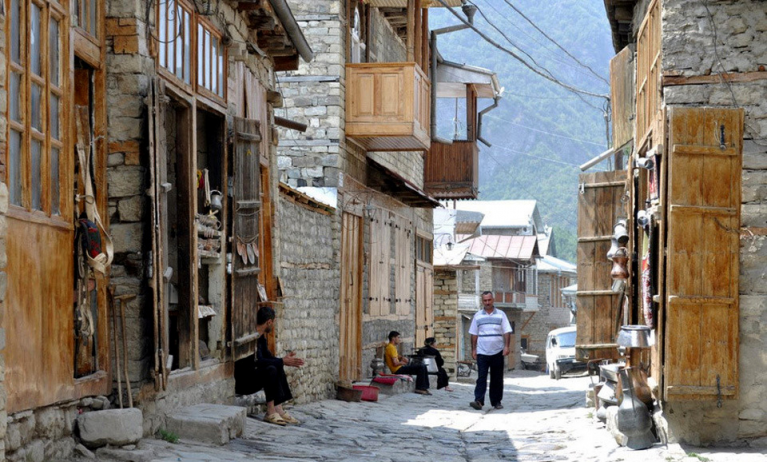
For many centuries, Lahidzh was a center of handmade brassware. As you can see, it has not changed much.
Lunch at a local tavern.
Driving to Oguz.
Dinner at a local tavern.
Overnight in Oguz.
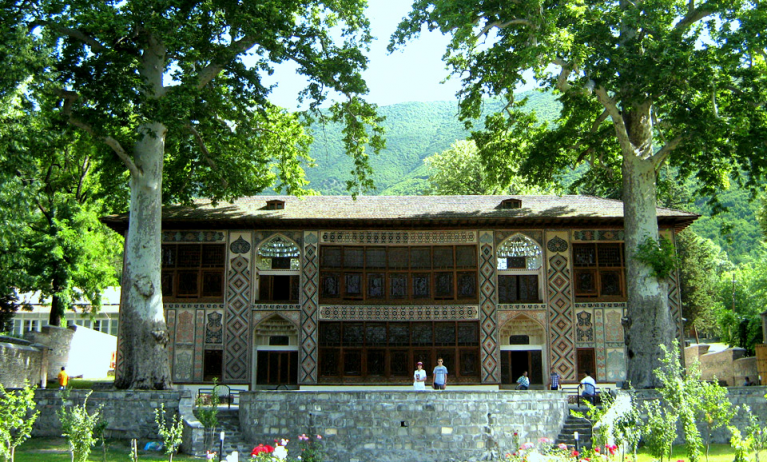
Day Ten
Transfer to Sheki. Distance – 260 km, duration – 4.5 hours.
Sheki is one of the oldest towns in Azerbaijan.
Lunch at a local tavern.
Visit one of the most well-known historical monuments is the Palace of the Sheki Khans (18th century). The palace has an exquisite façade, in front of which grow two sycamore trees planted in 1530.
Driving to Azerbaijan-Georgian border. Pass formalities and meet the guide.
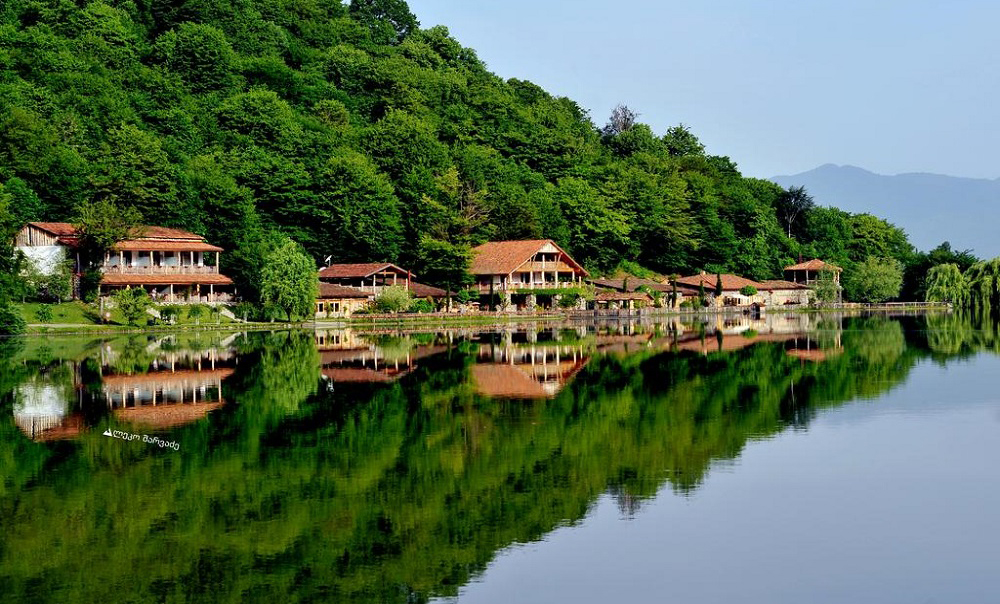
Driving to the hotel «Lopota Lake Rsort & SPA». Distance – 75 km.
Accommodate at the hotel. Rest.
Dinner at the hotel.
Overnight in «Lopota Lake Rsort & SPA».
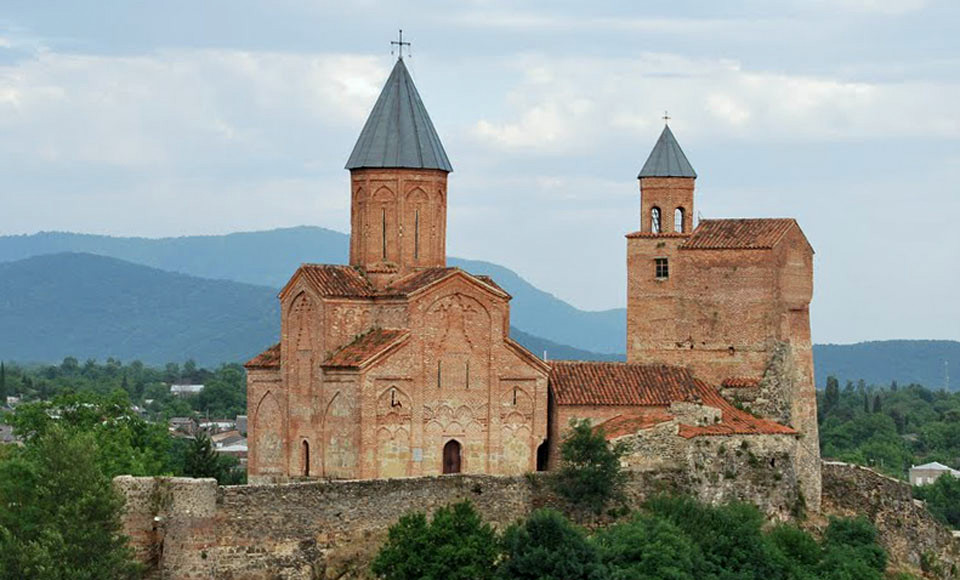
Day Eleven
Today we will start from excursion to Gremi fortress. Distance – 16 km.
Gremi was built in XV century, as summer residence of the king. Here you can visit museum, where you will see artifacts from II millennium BC till late of middle ages. And also in the tower of the castle is located a small Ethnographical museum.

Driving to Alaverdi Monastery (IX century) monastery. Distance – 35 km.
Alaverdi is a cross-domed church and appears as the center of the culture of middle centuries.

Frescoes of the 15th century are preserved here.

Monks of Alaverdi are also engaged in winemaking. Annually in the monastery international symposia are held to study the ancient Georgian way of making “kvevri’s wine”.

Next destination is Ikalto Monastery (VI century).
Ikalto is mostly known for its monastery complex and the Ikalto Academy.
It was founded by Saint Zenon, one of the 13 Syrian Fathers, in the late 6th century.

Transfer to the «Schuchmann Wine Bar & Restaurant». Distance – 19 km.
Lunch (Georgian cuisine).

After luch, we are going to the starting point of ballooning. It`s time for balloon ride above Alazani Valley. Pilots of balloon prepare the ball for flight. The balloon rises into the air and the journey continues across the sky above Alazani valley. Fascinates the beauty of the landscape that opens from the top. In the flight you are completely surrounded by silence. The ball moves smoothly, the speed of its flight is a little bit ahead of the pedestrian’s step.
There is no sense of wind as the ball moves with it.
*Flight depends on weather.
If it`s not favorable in the evening, flight will delay on 5/6 am of the same or the next day.

After landing, travelers are initiated to balloonists, they are given commemorative diplomas, badges.
Celebration, of course, does not do without champagne! Return back to the hotel.
Overnight in «Lopota Lake Rsort & SPA».

Day Twelve
Transfer to Tbilisi. Distance – 116 km.
Tbilisi walking tour at Old Tbilisi. Distance – 3 km, time – 2 hours.
Tbilisi, the capital of Georgia, is situated in the Eastern Georgia Tbilisi has been the capital of Georgia since the 5th century AD. Vakhtang Gorgasali, a king of Kartli, has laid capitals foundations.
Lunch at a local restaurant.
Accommodate at the hotel. Rest.

*OPTIONAL: Visit famous Tbilisi Sulfur Baths.
Here you can have a private VIP hall, with hot and cold-water pool. Also you can enjoy massage, after massage homemade tea with marmalade will give you inexpressible pleasure. Free time.
Dinner at a local restaurant.
Overnight in Tbilisi.

Day Thirteen
Excursion to Jvari, Mtskheta and Shio Mgvime. Distance – 20 km.
Jvari monastery is located on the top of a small hill, opening the fascinating view of old capital of Georgia – city of Mtskheta. After declaring Christianity, the state religion in Kartli, the cross (in Georgian – “Jvari”) – symbol of new religion has been erected there, and later, in V-VI century AD, the Church has been built. It is on the UNESCO List of the World Cultural Heritage.

Transfer to Svetitskhoveli Cathedral.
Svetitskhoveli Cathedral is one of the most sacred places in Georgia. The first wooden church in Georgia has been built here immediately upon declaring Christianity the state religion (337). Current impressive temple has been built in 11th century and it is the biggest out of the churches built before 21st century in Georgia. According to the legend, the temple is built at the place where the tunic of Jesus Christ has been buried.

According to the legend, the temple is built at the place where the tunic of Jesus Christ has been buried. During the centuries, the temple has been seriously damaged and repaired several times. Currently it is on the UNESCO List of the World Cultural Heritage.

The facades of the temple are decorated with stone carvings.
There are numerous symbols on external walls: crosses, figures of flying angels and elements of traditional Georgian symbolism: solar signs, vines…

The interior of the temple is simple and full of light. The paintings preserved on the walls were made mainly in the 16th-17th centuries.
Lunch at a local restaurant.

Transfer to Shio Mgvime monastery. Distance – 15 km.
Shio Mgvime monastery is located in a beautiful forest place on the left bank of the river Kura in Georgia. The road follows a narrow limestone canyon from the main square in the town Mtskheta. The medieval monastery consists by several buildings from different periods: The oldest one is the Monastery of St. John the Baptist – dated 560-580 – the simple cruciform building with octagonal dome; The Upper Church Theotokos 12th c. was a domed church destroyed by invasion and in 1678 was restored as Basilica; Refectory 2th -17th cc.; the Cave of St. Shio – 6th c. and a small chapel – 12th c. adorned with medieval murals stands separately on a nearby hill.

Next destination is the wine cellar “Guramishvlis Marani”. Distance – 22 km.
Excursion at wine cellar, after which we will taste several types of Georgian wine.

Then we will see how Georgians are baking bread “shoti”, making khinkali.and destilate chacha…

… how to prepare Georgian national sweet “churchkhela”…
At pleasure we can also take part in demonstration.
During demonstrations will be served snacks.

Event will be accompanied by the performance of Georgian musicians.

Dinner at Guramishvili`s Wine Cellar.

Especially for our guests, dinner accompanied by with Folk show.
Georgian polyphonic songs…..

…and Georgian national dances.
Return back to Tbilisi.
Overnight in Tbilisi.

Day Forteen.
Excursion to Gori and Uplis Tsikhe. Distance – 75 km, duration – 1 hour.
Gori is one of Georgia’s oldest towns. The chronicles say that it has existed since the beginning of the 12th century, but archeological finds indicate that urban-type settlements appeared there as early as the 3rd century BC. The Gori Fortress (12th century) stands in the center of the town on a high hill. It is a powerful multi- level fortification. In the mid-20th century, a stratum dating back to antiquity was uncovered at its foot. The fortress was obviously built at the site of fortifications dating back to the first century BC

Will visit museum of Stalin is located. Museum complex consists of memorial house, where Stalin was born, exposition building with tower and Stalin’s personal coach with interior, by which he had travelled to Tehran, Yalta and Potsdam. Museum houses Stalin’s personal things, study room of Kremlin, manuscripts, gifts from over the world, Stalin’s death mask and etc. Lunch at a local restaurant.

Transfer to Uplistsikhe.
Uplistsikhe is a cave settlement 12 km from the town of Gori that arose on the banks of the Mtkvari River at the end of the 3nd century BC. The town was entirely hewed into the volcanic cliff. It has streets, squares, palaces, churches, residential buildings, a theater, shops, an apothecary, wine cellar, prison, and a plumbing system. In its heyday, it included more than 700 cave structures. Around 150 of them, as well as part of the fortress walls, have been preserved. There is a secret underground passage to the river. In the pre-Christian period, Uplistsikhe was a pagan worship center.
Transfer to Tbilisi
Dinner at a local restaurant.
Overnight in Tbilisi.

Day Fifteen
Transfer to Sadakhlo, Georgia-Armenia border. Distance – 72 km, time – 1.20 hours.
We will pass border and continue our travel to Yerevan. Distance 225 km, time 3 hours.

We will visit Sevan Lake and Sevanavank monastery. A fresh water lake of pure natural beauty such as that embodied by Lake Sevan is rare. Originally made from three churches, Sevanavank monastery was built on an island. Receding waters in the 20th century created the current peninsula. The monastery was founded in 874. Lunch at a local restaurant.

We arrive to Yerevan – the capital of Armenia.
Check-in at the hotel in Yerevan. Free time for rest.
In the evening we will have a city tour visiting Republic Square of Armenia, designed by famous Armenian architecture Alexander Tamanyan in early 19s’. Cascade – a monument rising over the city center, from the top of which the whole city is seen.
Dinner at a local restaurant.
Overnight in Yerevan.

Day Sixteen
Excursion to Echmiadzin Cathedral.
We will visit the Echmiadzin Cathedral is under UNESCO heritage list. It is the most venerated site of Armenia, because of holy relics, which are preserved there. One of them is spear of Legionnaire Gaius Cassius, which pierced the chest of the crucified Jesus Christ.

The church was originally made of wood. A stone church was built in the 5th century. The frescoes in the interior date back to the 17th-18th centuries

Drive to Zvartnots. Distance 10 km, Duration – 15 min.
Zvartnots Temple, another UNESCO site. The complex of structures here were erected in the 7th Century and are a majestic sight, as well as being of extreme architectural value.
Return back to Yerevan.
Lunch at a local restaurant.

Excursion to Ararat cognac factory.
Here the professional guide-taster will tell about the history of the creation and promotion of Armenian cognac all over the world, and also will present interesting facts about the process of making Armenian cognac. After the excursion in the museum of cognacs we will taste Armenian cognac.
Dinner at a local restaurant.
Overnight in Yerevan.

Day Seventeen
Today our destination will be the central part of Armenia, where are located 2 sites of UNESCO heritage.
First of all, we will visit The Monastery Of Geghard. The monastery is unique with its architectural style. It is built in rock. The Geghard Monastery began only as a small cave chapel. Here is flowing sacred spring.

We will also visit an ancient Armenian pagan temple of Garni, which is located above the gorge of the Azat river. It is the only surviving pagan construction in the territory of Armenia.
Here we will be able to listen to Armenian traditional musical instrument called Duduk. No other musical instrument is able to present the emotions of the Armenian people as the Duduk.
Lunch at a local tavern, or picnic lunch.
Return back to Yerevan.
Dinner at a local restaurant.
Overnight in Yerevan.

Day Eighteen
Check-out from the hotel before 12:00 and transfer to airport 2.5 hours before departure flight.
Departure (time should be confirmed).



 30-3, Vladimir Gabashvili st. 0162 Tbilisi, Georgia
30-3, Vladimir Gabashvili st. 0162 Tbilisi, Georgia (+995 599) 40 66 99
(+995 599) 40 66 99 info@skytravel.ge
info@skytravel.ge
